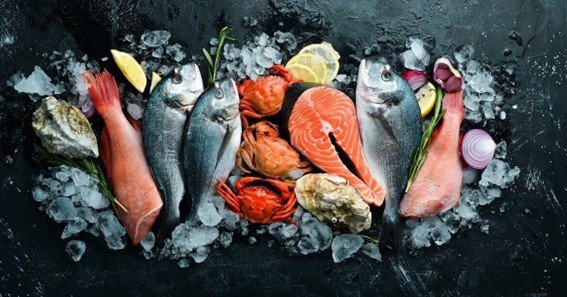Fish is often touted as one of the healthiest protein sources, rich in omega-3 fatty acids and essential nutrients. However, not all fish are created equal when it comes to mercury levels. Consuming fish with high mercury levels can pose serious health risks, especially for pregnant women, children, and those with compromised immune systems. In this article, we will explore which fish are high in mercury and how to make informed choices about the types of seafood you eat.
Which Fish Are High in Mercury?
Mercury is a naturally occurring element that can accumulate in water bodies, where it transforms into methylmercury—a toxic compound. Fish absorb methylmercury from the water and their food. Over time, this mercury builds up in their tissues, particularly in larger and predatory fish. So, which fish are high in mercury?
- Shark: One of the fish with high mercury levels, shark is at the top of the food chain, meaning it consumes smaller fish and accumulates dangerous amounts of mercury.
- Swordfish: Known for its firm texture and flavor, swordfish is also known for containing dangerous levels of mercury in fish species.
- King Mackerel: While mackerel can be a good source of omega-3s, the king mackerel variety is one of the high mercury fish to avoid due to its elevated mercury concentration.
- Tilefish: Popular in certain regions, tilefish ranks among the fish with unsafe mercury levels, making it a poor choice for those mindful of mercury exposure.
- Tuna (Bigeye and Ahi): While not all tuna varieties are high in mercury, bigeye and ahi tuna contain some of the most mercury and should be limited in your diet.
Health Risks of Mercury in Fish
Understanding the health risks of mercury in fish is crucial for making informed dietary choices. Mercury exposure, particularly in large quantities, can affect the nervous system and brain function. Pregnant women and young children are especially vulnerable to mercury exposure, as it can impair fetal and child development. Knowing which fish contain the most mercury can help reduce these risks.
For most adults, occasional consumption of fish with low mercury levels is generally safe. However, regularly consuming seafood with high mercury concentrations can lead to mercury poisoning, which manifests in symptoms like memory problems, tremors, and numbness.
How to Choose Fish with Low Mercury Levels
The good news is that many fish species are low in mercury and safe to eat regularly. While types of fish high in mercury like swordfish and shark should be avoided, there are plenty of other options that provide health benefits without the risks of mercury exposure. Fish like salmon, sardines, and trout are all low in mercury and high in essential nutrients like omega-3 fatty acids.

FAQ
- Which fish are high in mercury?
Fish like shark, swordfish, king mackerel, tilefish, and bigeye tuna are known to have high mercury levels. - What are the health risks of consuming fish with high mercury?
Mercury exposure can lead to nervous system damage, especially in pregnant women and children. It can impair brain function and cause memory issues and tremors. - Which fish contain the most mercury?
Shark, swordfish, and king mackerel are among the fish with the most mercury and should be avoided for regular consumption. - What types of fish should I avoid to reduce mercury exposure?
You should avoid high mercury fish like tilefish, swordfish, and certain types of tuna (bigeye and ahi) to reduce mercury exposure. - Can I still eat seafood safely?
Yes, many types of fish like salmon, sardines, and trout are low in mercury and can be eaten regularly without posing health risks.
In conclusion, understanding which fish are high in mercury is essential for maintaining a healthy diet. Avoiding species like shark, swordfish, and king mackerel, while opting for lower mercury options like salmon and sardines, ensures you reap the health benefits of seafood without the risks of mercury exposure.










